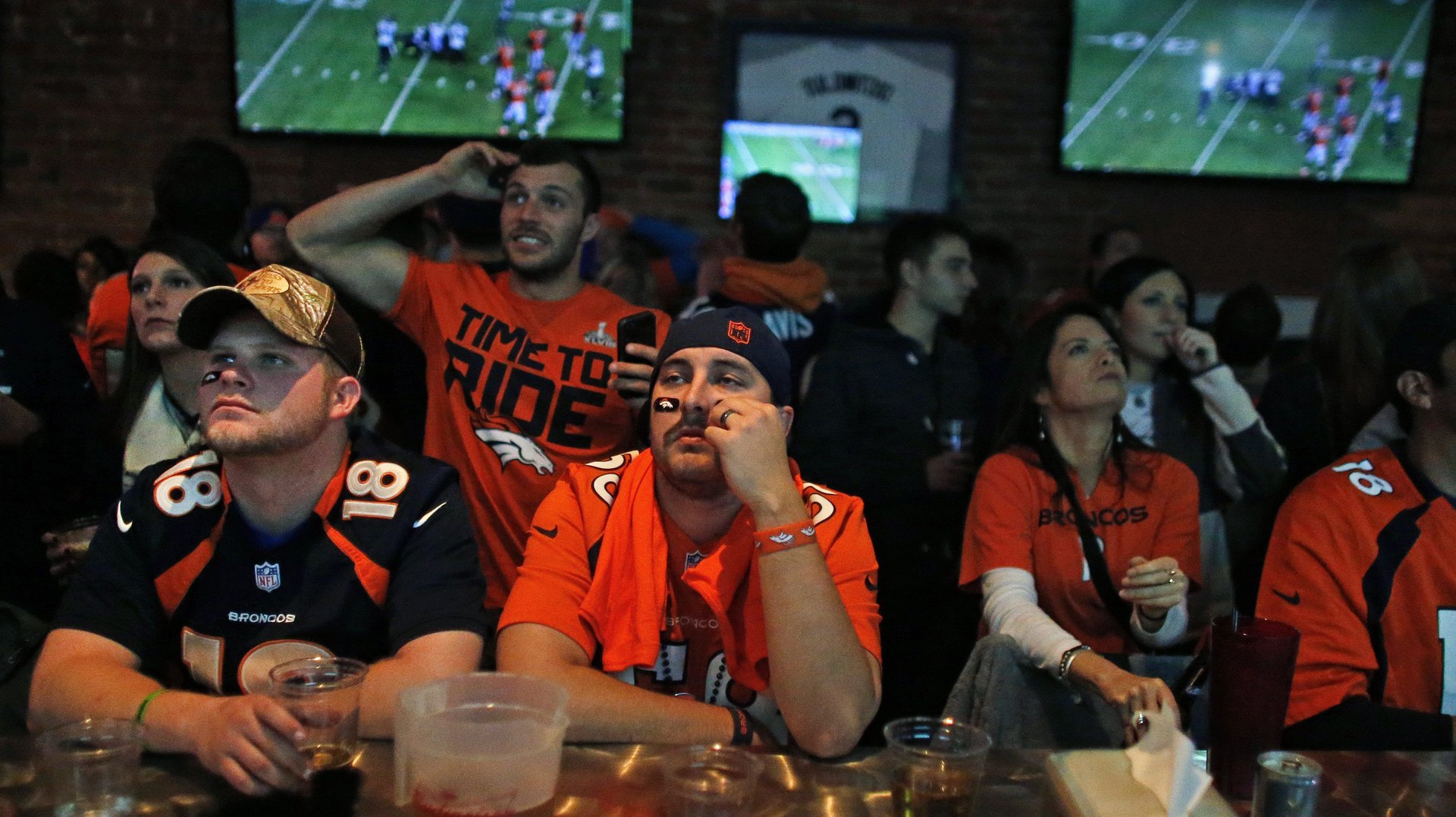How the cost of a Super Bowl commercial soared above $5 million
Between the coin toss and end of play, last year’s Super Bowl brought in an estimated $419 million from advertising for US broadcaster Fox, Kantar Media found. The staggering sum is greater than the GDP of small countries like Kiribati and Anguilla.


Between the coin toss and end of play, last year’s Super Bowl brought in an estimated $419 million from advertising for US broadcaster Fox, Kantar Media found. The staggering sum is greater than the GDP of small countries like Kiribati and Anguilla.
Advertising spending for the game has grown faster than inflation for the last five years. It soared 87% over the last decade, data from research firm Kantar showed. And advertisers are paying broadcaster NBC a price tag “north of $5 million” for 30 seconds of ad time in the NFL championship game this year. That doesn’t even count the cost of production for the commercials, which often feature high-profile celebrities, or the cost of marketing the ads outside of the game. How can a single football game spur such spending?
To understand the steep ramp up, look at what’s happening elsewhere in TV. The number of people in the US who don’t have traditional pay-TV services will reach 63 million in 2018, eMarketer projects. That’s a 72% increase from 2010. The more media consumption fragments, the more coveted the Super Bowl’s audience becomes.
“So much of media is fragmenting into smaller and smaller audiences,” says Tim Calkins, professor of marketing at the Kellogg School of Management. “If you want to reach a lot of people, really the only way you can do it is on the Super Bowl…. It has the lovely combination of a big audience and a group of people that want to listen to the advertising and that makes it so valuable.”
The Super Bowl is the largest televised event in the US, by far, which makes it the biggest event in the world given the size of the media market. Last year, the live broadcast on Fox attracted some 111 million TV viewers, and was the fifth most-watched broadcast in TV history. There are virtually no other moments during the year when so much of the nation is gathered in one place, making it the ideal venue for advertisers.
Last year’s Super Bowl viewership was a tick down—a little under 3— from the peak of 114 million viewers in 2015. But that’s nothing compared to the losses sustained elsewhere in the broadcast TV world, where some returning shows on ABC, CBS, NBC, and Fox lost up to 53% of their viewers during the 2016-2017 TV season, by IndieWire’s analysis. Only one network series, ABC’s The Bachelor, gained viewers, and 27 experienced heavy ratings losses of at least 25%.
The next-largest televised event outside of the NFL is usually the Oscars, which pulled in about 33 million live viewers last year—still less than one-third of the Super Bowl’s audience. It cost around $1.9 million for a 30-second spot during the 2017 Academy Awards.
There’s also unusual demand for ads during the Super Bowl that allows networks to charge more for advertising. “The price doesn’t get bid that high unless there’s ample demand for it,” says Jon Swallen, chief research officer at Kantar Media.
It’s not only the football teams that face off in game. Brands vie for the best ad, and are known to be bold, risky, comical, and even emotional in their creative work for the Super Bowl. People look forward to Super Bowl commercials, a rarity in the days of skippable ads.
“It’s the fact that it’s a live event,” says Swallen. ”It’s not something that many people record on a DVR to try to avoid commercials.”
All of this raises the demand for the TV rights in the game. Broadcasters renegotiate the rights to carry the Super Bowl with the NFL every few years. “If those fees go up with each successive cycle,” says Swallen, “the networks need to recoup their investments and one of the ways they do that is through higher advertising rates that get passed on to marketers.”
The current nine-year contract for the Super Bowl runs through the 2022 NFL season. CBS, NBC, and Fox rotate airing the game each year.